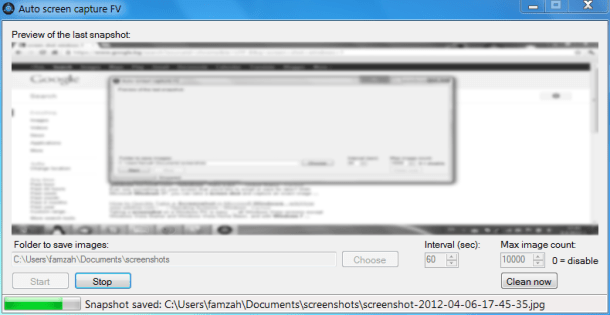I recently migrated my desktop back to Windows, and while I’m at work I need to have regular screenshots of my monitor, for investigation and other purposes. I easily found a solution to record desktop activity by making regular screenshots on Ubuntu, and I thought that Windows solutions will be even more. It turned out to be the opposite — they were all either paid or not working/lacking features.
Here is how “Auto Screen Capture FV” was born. Two screenshots of the interface follow:
It has the following features:
- Runs on Windows
- Free as speech; open-source, developed with Microsoft Visual C# 2010 Express
- Captures a screenshot automatically without disrupting user activity
- Saves the snapshot images as compressed JPEG files, in order to save disk space
- The destination directory where the images are saved is selected by the user
- Rotates too old image files by deleting them, in order to save disk space
- All settings are permanently saved in the registry, so next program starts remember what you configured
- Auto screen capture can be easily temporarily suspended
- Program can run in background; it minimizes to system tray
Old image files are actually moved to “Recycle bin” by default, in order to be on the safe side — if we have a bug, no files are lost. Auto Screen Capture FV has been tested on Windows 7.
Download links:
- Installer (there is an uninstaller in the Control Panel)
- A list with all released versions
- Sources
Resources:

